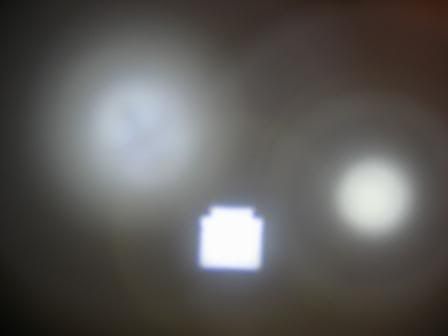I have the DR handheld backup - although I added the cord for experimental S&G,travel and quarry purposes and I am occasionally tempted to carry it corded in a DS pocket rather than on the shoulder strap as it is much easier to use as a back up in that configuration - but slower to deploy.
I am assuming that "continuing the dive" after handing a backup light to a buddy (why does he not have his own?) means aborting the dive and exiting the overhead environment. A primary light failure should be cause to thumb the dive. Period. Unless you happen to have another primary light along as well as 2 backups.
Part of the temptation to put the corded 500 Lumen DR light in a DS pocket with the safety spool, etc is that it is overall small enough and light enough to do that and it provides enough light to function as a primary. So with it in a pocket in addition to a primary and the normally carried two strap mounted backups (ie: you have 4 lights along, not 3) it would provide the ability to have an extra primary among the team with minimal extra weight and bulk. But I have to overcome my Hog roots before I commit to that type of change given the infrequency of primary light failures - at least compared to the overvolted halogen lights used 10 years ago.
One advantage corded or handheld is the increased utility and capability compared to a more normal 3W backup and that is very attractive and makes the additional bulk worth it. The downside is the $300 sticker price.
In any case, it can be used either way and makes a great hand held backup or with the cord serves as a lightweight, compact, easy to travel with primary that does not require a charger for casual traveling wreck dives, etc. In fact the reason I got the cord is for trip insurance in case I have a primary failure during a trip to N FL or NC where a primary light failure could effect far more than just that dive. A corded DR backup (along with 2 other normal backup lights) would get you through the rest of a technical trip.
It is a bit on the large size in both lenght and diameter compared to the normal 3 "C" cell Halogen or LED back up light, but it puts out a very useful amount of light - comparable to a 10W HID. And the burn time is impressive and it steps down from 3 LED's to 2 to 1 over several hours beyond the normal 20 hr burn time, so you'd have to be a real moron to run the batteries completely dead - a good trait in a back up light.
Call me cheap, but you can get the LED version of the Pelican Sabre Light for about $35.00 and the output is about the same as the arguably slightly more durable and a bit harder to flood but much more expensive LED Scout. So spending more on the DR handheld and then buying a couple cheaper sabre lights makes some sense.
I





